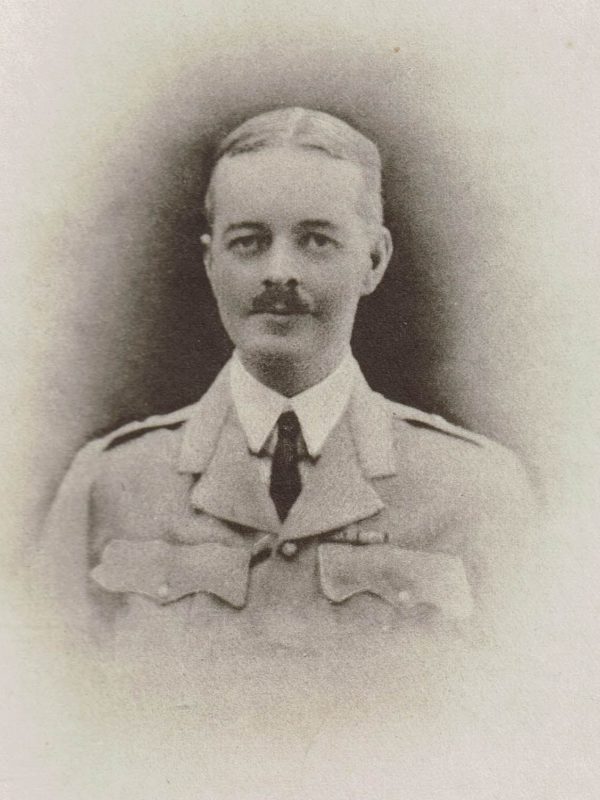Died: 21st January 1916
Age: 45
William Hurst Nicolson, eldest son of the Reverend Doctor W Millar Nicolson, formerly Minister of the Scottish Church in Midvale Road, Jersey, was born 19th September, 1870. He entered [Victoria] College in 1882 and three years later went on to Bristol Grammar School. In 1888 he entered Edinburgh University, where his father had been Greek Medallist, Fellow and Tutor, and passing into the Senior Greek Class had completed two sessions for his MA when he went to Sandhurst as a University candidate.
He received his commission in The Royal Munster Fusiliers in 1892, and in 1896 transferred to the Indian Army. He served for a time with the 21st and afterwards the 31st Punjabis, and then permanently joined the 37th Dogras. He was promoted Captain in 1901 and Major in 1910. In 1897 – 1898 he saw service on the North-West Frontier, and was in the action at Malakand. He had the medal with clasp for that service, and received another clasp for the Tirah campaign, in which he was Assistant Transport Officer to the 5th Brigade. For a period of nine years, from 1901, he was seconded for work in East Africa with the King’s African Rifles. He fought against the Ogaden Somalis, and some years later at Nandi, for which services he had the East African Medal with clasp.
He was a keen sportsman, and had a very fine collection of heads shot in East Africa and the Himalayas. His Greater Koodoo was the largest on record at the time.
In December 1915, he went with the 35th Brigade, IEF, to Mesopotamia. He was in action at the Battle of Sheikh Saad, 6th, 7th and 8th January, 1916, where the regiment behaved magnificently and won a very dearly bought victory. He wrote: “I am amazed that one of us is left. The rain of bullets is too awful and the Turkish fire is very accurate. We had no cover, and the battlefield is as flat as a table.” A few days later Nicolson was again in action at the Battle of the Wady. There was no rest, the greatest privations were endured, and the cold was intense. A week later, 21st January, 1916, he was killed while gallantly leading the regiment against overwhelming odds at the Battle of Um-el-Hannah. The chaplain brought his body in after the battle and he was buried between two of his friends. A memorial brass has been placed in the Church at Jhelum and a monument is to be erected where they lie.
One of his brother, officers writes: “Major. Nicolson died gloriously at the head of his lads. We were all looking forward so much to the day when he would command us, and his death is a very bitter blow and grievous loss.
He was mentioned in Sir Percy Lake’s Despatch for gallant and distinguished service in the Field.
The above text appeared in the Victoria College Book of Remembrance published in 1920.
The link to the Channel Islands Great War Study Group website is: http://www.greatwarci.net/index.htm
The CWGC website link is: http://www.cwgc.org/find-war-dead/casualty/629667/NICOLSON,%20WILLIAM%20HURST

